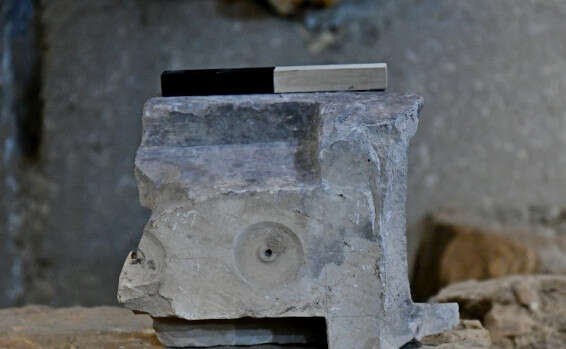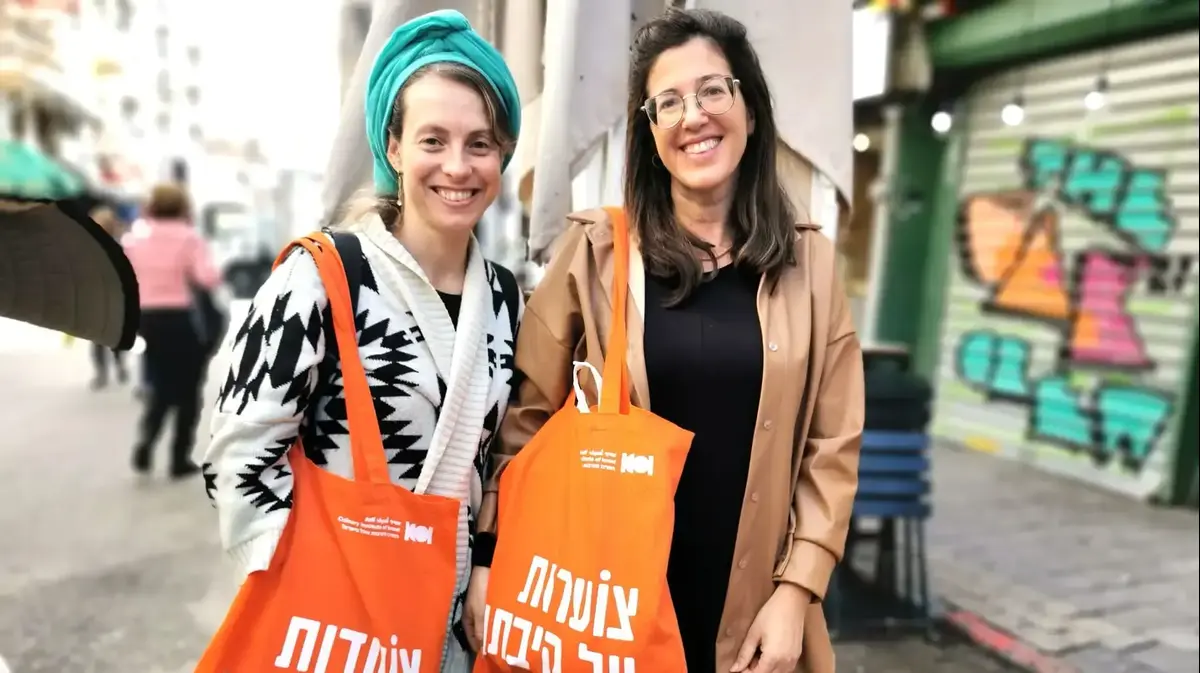An uncommon 2,000-year-old artifact recently discovered during excavations in the city of David reinforces the belief that the Lower Town Square served as the central market of Jerusalem during the Second Temple period
The lower part of the object found in excavations in the City of David // Photo: Ari Levy, Israel Antiquities Authority
Has the second-period Jerusalem market been discovered? A rare object that was used to measure the volume of a 2000-year-old volume, which was recently discovered in excavations by the Israel Antiquities Authority in the City of David in the Jerusalem Walls National Park, reinforces the belief that the city's Lower Town Square was exposed from the Second Temple period.
The plaza appears to have been the focus of the city's commercial activity. The researchers suggest that in this area was the office of the Agronomos - the supervisor of the measurements and weights of the city of Jerusalem. This is a part of a stone table that was used to determine uniform volume dimensions, which was discovered near a large cobblestone street on the stepped street that led pilgrims from the transport pool to the Temple Mount.
Prof. Ronnie Reich, who is researching the object: "At the break of the survey table that was discovered in the City of David, two of the deep-engraved sinks remained, each with a small perforation at the bottom. The puncture at the bottom could be punctured with a finger, filled with any fluid outlet, removed the finger and emptied of the material into another vessel, thereby determining the volume of the vessel, according to the standard of the measuring table. In this way, traders could come and calibrate their measuring tools to a uniform standard. "
Reich added: "It's a rare tool. Other stone tools were very popular in Jerusalem during the Second Temple period, but so far, only two volumes for measuring volume have been discovered in the excavations - one was discovered in the Jewish Quarter excavations in the 1970s, and another was found in excavations in Shawaft, north of Jerusalem. "
Archaeologist Ari Levy, one of the Israel Antiquities Authority's excavators on the graded street: "Many stone weights were discovered in various excavations in the city of David, and of different values. The weights found belong to a type that was mostly typical of Jerusalem. The fact that there were typical weights for the city is indicative of the uniqueness of the economy and trade in Jerusalem during the Second Temple period, which may have been influenced by the Temple. "
The stone weights are made of a kind of square, and of different sizes, representing different values of weight. Reich says more than 90% of the total stone weights of this type, numbering a few hundred in total, are found in archaeological excavations conducted in ancient Jerusalem during the Second Temple period, making them special and representing a distinctly Jerusalem phenomenon.
Antiquities Authority investigators Nachshon Zanton, Moran Hajbi, and Midad Shore, one of the IAA's digging managers, have in recent years uncovered a large cobblestone street that rose to the Temple on Monday, suggesting that this plaza served as the Lower Town Square Jerusalem's trading activity.
Archaeologist Ari Levy: "The volume standards table we found and the stone weights discovered nearby reinforce the belief that there was a lot of commercial activity in place, and perhaps here to indicate the existence of a market." Prof. Reich added: "This area of the Second Temple period may have been the office of the Jerusalem Commissioner for Measurements and Weights - a position widely accepted in other cities throughout the Roman Empire and recognized by the Greek title Agarnos."









